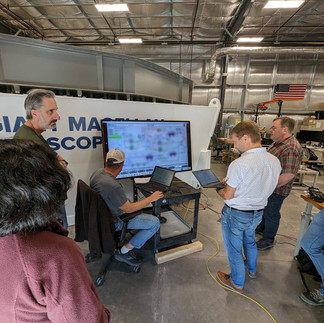Since 2021, EKA has been supporting the Giant Magellan Telescope (GMT) in their design process for mirror’s thermal management, utilizing natural refrigeration and meeting high standard requirements, as you can imagine.

Final design review
Last week, the Giant Magellan Telescope's enclosure has passed its final design review, marking a key milestone for this astronomical project. Designed by IDOM, the 65-meter-tall enclosure will be one of the largest mechanized buildings, capable of a full rotation in four minutes to reveal the 25.4-meter telescope. Construction is set to begin in Chile, with the telescope expected to be operational by the early 2030s. This advancement supports the project's goal of significantly enhancing the resolution and power of ground-based telescopes. Jörgen Rogstam from EKAnalys was on site in Pasadena, California, to be part of this review process.
For more details on this final review, visit Giant Magellan Telescope.
A tailormade R744 – CO2 training
As part of this development support, the customer GMTO asked for a technical training about R744 – CO2 as a refrigerant last October (2023) in Tucson, Arizona. The training covers several key areas:
Introduction to CO2: Discusses why CO2 is chosen, its environmental impact, basic refrigeration principles, CO2 properties, and system solutions.
System Components: Includes pipes, valves, compressors, and heat exchangers.
Safety: Focuses on gas handling, safety equipment, and applicable codes.
Materials: Details materials used in CO2 systems and relevant technologies.
Software and Tools: Covers various design and calculation tools.
Case Studies: Involves practical exercises and system simulations.
Practical Handling: Addresses testing, charging, venting, and optimization.
GMT Applications: Discusses specific design considerations and future developments.
Facts on Thermal control:The Giant Magellan Telescope employs a Thermal Control System to mitigate the seeing effect, which results from temperature discrepancies between the primary mirror and the surrounding air, leading to localized turbulence. To address this, the system works to equalize the temperature of the mirror with that of the ambient air. This is achieved through a closed-cycle forced-air convection system that helps maintain thermal balance within the telescope enclosure. Fourteen CO2-based refrigeration air handler units, uniquely designed for this purpose, are installed within the mirror support structure to circulate air and reduce temperature gradients across the mirror's surface. |













Comments